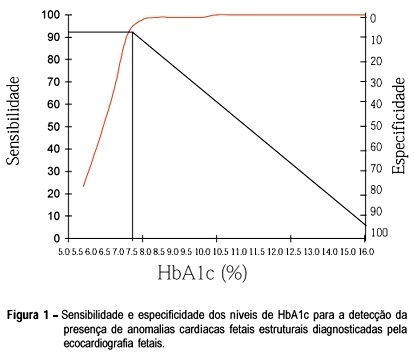Summary
Revista Brasileira de Ginecologia e Obstetrícia. 2023;45(5):235-241
To evaluate the accuracy and patient acceptability toward self-sampling using a new device - SelfCervix® - for detecting HPV-DNA.
A total of 73 women aged 25–65 who underwent regular cervical cancer screening from March to October 2016 were included. Women performed self-sampling followed by a physician-sampling, and the samples were analyzed for HPV-DNA. After that, patients were surveyed about their acceptability of self-sampling.
HPV-DNA detection rate of self-sampling presented high accuracy and was similar to physician-collection. Sixty-four (87.7%) patients answered the acceptability survey. Most patients (89%) considered the self-sampling comfortable, and 82.5% preferred self-sampling to physician-sampling. The reasons cited were time-saving and convenience. Fifty-one (79.7%) reported that they would recommend self-sampling.
Self-sampling using the new Brazilian device SelfCervix® is not inferior in HPV-DNA detection rate compared with physician-collection, and patients are supportive of the method. Therefore, it might be an option to reach under-screened populations in Brazil.
Summary
Revista Brasileira de Ginecologia e Obstetrícia. 2021;43(3):235-237
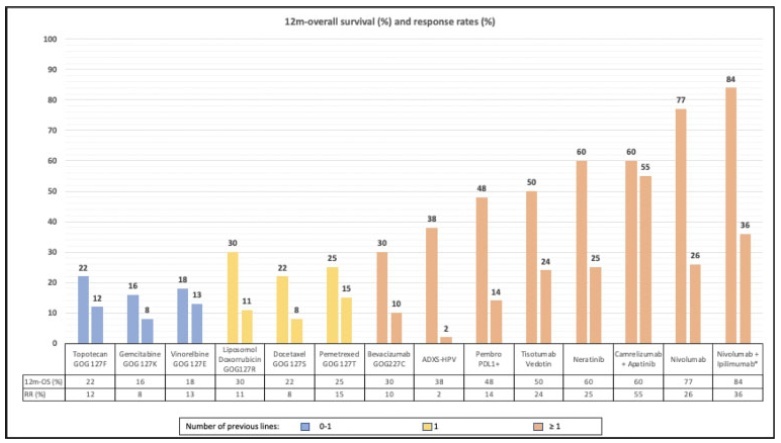
Summary
Revista Brasileira de Ginecologia e Obstetrícia. 2020;42(5):235-239
Missed abortion occurs in ~ 15% of all clinical pregnancies. The pathogenesis is not clearly known. However, defective placentation resulting in maternal systemic inflammatory response is considered responsible for missed abortion. Platelet lymphocyte ratio (PLR) and neutrophil lymphocyte ratio (NLR) are increasingly cited parameters of inflammation in the literature. However, no study evaluated the PLR and NLR rates in missed abortions so far. The aim of the present study is to investigate whether complete blood count (CBC) inflammatory parameters such as NLR and PLR are increased in patients with missed abortion.
Medical records of 40 pregnant women whose gestation ended in missed abortion at between 6 and14 weeks of gestation and of 40 healthy pregnant women were collected and compared retrospectively. The groups were compared regarding hemoglobin, hematocrit, platelet count (PLT), mean platelet volume (MPV), platelet distribution width (PDW), PLR and NLR.
Platelet distribution width, NLR and PLR values were higher in the missed abortion group compared with the healthy pregnant women group (rates are p = 0.043; p = 0.038; and p = 0.010, respectively). Hematocrit, MPV, and lymphocyte values were found to be lower in the missed abortion group compared with the healthy pregnant women group (p = 0.027, p = 0.044 and p = 0.025, respectively).
The PDW, NLR and PLR values of the missed abortion group were reported high; and MPV values were reported low in the present study. These findings may help to speculate a defective placentation in the pathogenesis of missed abortion.
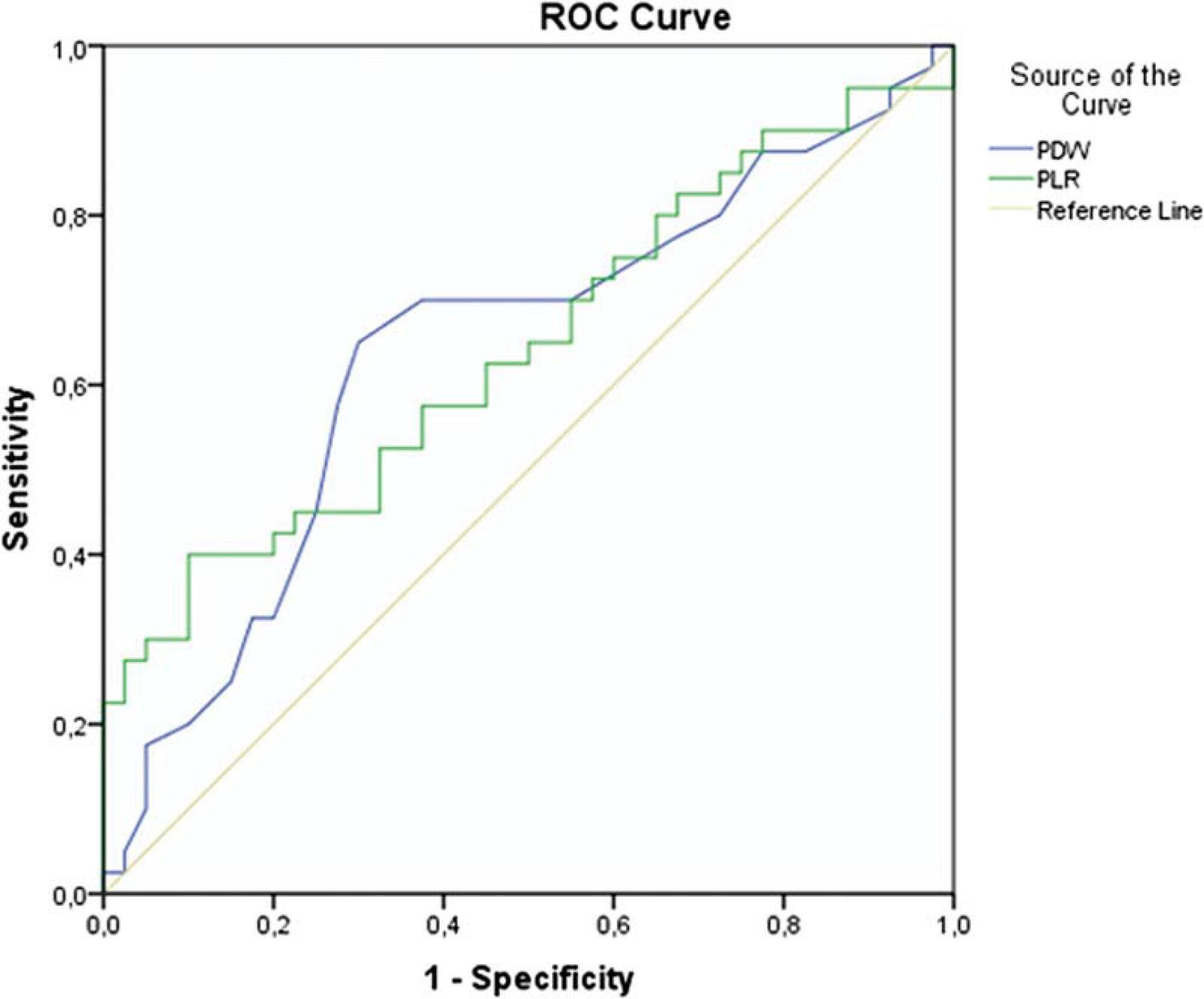
Summary
Revista Brasileira de Ginecologia e Obstetrícia. 2005;27(5):235-242
DOI 10.1590/S0100-72032005000500002
PURPOSE: the proposal of the present study was to translate and to validate King's Health Questionnaire (KHQ) for Brazilian women with urinary incontinence. METHODS: a hundred and thirty-four patients with urinary incontinence, confirmed by urodynamic study, were enrolled from the outpatient clinic of Uroginecology. Initially, we translated the KHQ into the Brazilian Portuguese language in agreement with international criteria. Due to language and cultural differences we performed a cultural, structural, conceptual, and semantic adaptation of the KHQ, in order to make sure that patients were able to fully understand the questions. All patients answered the KHQ twice on the same day, within an interval of 30 min, applied by two different interviewers. After 7 to 14 days, on a second visit, the questionnaire was applied again. Reliability (intra- and interobserver internal consistency), construct and discriminative validity were tested. RESULTS: several cultural adaptations were necessary until we reached the final version. The intra-observer internal consistency (alpha of Cronbach) of the several dimensions varied from moderate to high (0.77-0.90), and the interobserver internal consistency varied from 0.66 to 0.94. Moderate to strong correlation was detected among the specific KHQ urinary incontinence dominions and clinical urinary incontinence manifestations known to affect the quality of life of these patients. CONCLUSION: KHQ was adapted to the Portuguese language and to the Brazilian culture, showing great reliability and validity. It should be included and used in any Brazilian urinary incontinence clinical trial.
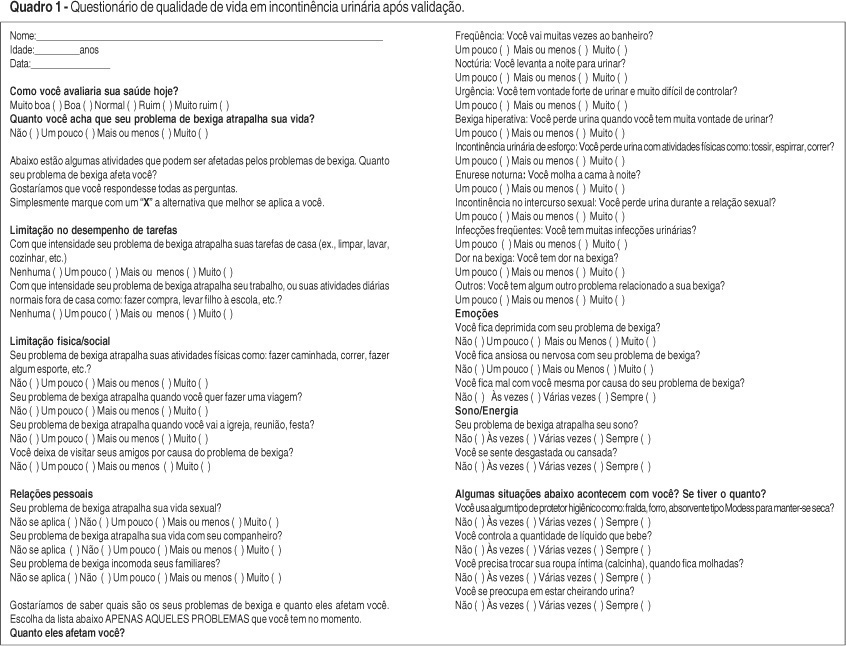
Summary
Revista Brasileira de Ginecologia e Obstetrícia. 2019;41(4):236-241
To compare sexual function and quality of life (QOL) among intrauterine contraceptive (copper-intrauterine device [Cu-IUD] or the 52-mg 20 μg/day levonorgestrel- releasing intrauterine system [LNG-IUS]) users.
This was part of a cross-sectional study. Women aged between 18 and 49 years old, in a heterosexual relationship, reporting sexual intercourse in the previous 4 weeks, using Cu-IUD (Group 1) or LNG-IUS (Group 2) responded to a questionnaire with sociodemographic information, to the Female Sexual Function Index (FSFI), to the World Health Organization QOL Questionnaire Abbreviated Version (WHOQOL-BREF), and to a questionnaire about the contraceptive method used. The Student t-test, the Pearson χ2 test or the Fisher exact test, and the Mann-Whitney test were used for the analysis. For the adjusted comparison, we have used the analysis of covariance (ANCOVA). A multiple regression analyzing factors related to FSFI 26.55 was done. Significance was established at p < 0.05.
A total of 347 women in Group 1 (mean age of 32.3 ± 7.5 years old) and of 298 in Group 2 (mean age of 32.7 ± 6.4 years old) completed the questionnaires.Most women had ≥ 8 years of schooling, were in amonogamous relationship, and had had ≤ 2 pregnancies. A total of 122 Cu-IUD and of 87 LNG-IUS users scored ≤ 26.55 on the FSFI. Significant lower scores in physical, environmental, and overall QOL domains in the WHOQOL-BREF questionnaire were found in Group 1. More women using the Cu- IUD were not satisfied with the method.
We did not find significant differences in sexual function; there was a lower score in some domains of QOL among women who used the Cu-IUD. It was not possible to ensure that those differences were related to the contraceptive method.
Summary
Revista Brasileira de Ginecologia e Obstetrícia. 2003;25(4):237-241
DOI 10.1590/S0100-72032003000400003
PURPOSE: to investigate the accuracy of hysteroscopy as a method for the evaluation of the uterine cavity in women with postmenopausal bleeding. METHODS: a cross-sectional study that consisted of the evaluation of 78 women with postmenopausal bleeding submitled to histeroscopy and directed biopsy in the period from January 2000 to June 2002 in the Bahia State Oncology Center. Hysteroscopy findings were classified as benign (leiomyoma, polyp, atrophy, normal) and suspect (hyperplasia, thickening, cancer) and the histopathologic findings as benign (leiomyoma, polyp, non-atypical hyperplasia, atrophy) and malignant (cancer and atypical hyperplasia). The results of hysteroscopy were compared with the pathologic findings. RESULTS: in relation to the suspect results (thickening, hyperplasia and cancer) hysteroscopy sensitivity and specificity were 85.7 and 88.7%, respectively. Positive and negative predictive values were 42.83 and 98.4%. Likelihood ratios of positive and negative tests were 7.6 and 0.16. Accuracy was 88.4% and kappa index, 0.5. CONCLUSION: hysteroscopy alone did not show an acceptable accuracy in the study, reinforcing the idea that its main advantage is to direct the biopsy, and it must always be associated with the histological diagnosis.
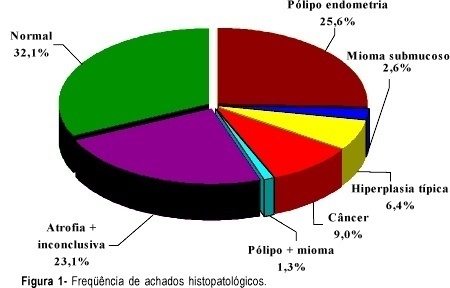
Summary
Revista Brasileira de Ginecologia e Obstetrícia. 2014;36(6):237-243
DOI 10.1590/S0100-720320140005010
To assess the determinants of late stage in women with cervical cancer in Brazil.
A cross-sectional study of secondary basis. Women with invasive cervical cancer enrolled in the Cancer Hospital Registry between January 2000 and December 2009 were included. Late clinical stage (≥IIB) was the outcome considered. The following variables were studied: age at diagnosis, race or ethnicity, years of education, marital status, alcohol consumption, smoking status, place of residence, year of diagnosis, initial treatment received, and status after the first treatment. Odds ratio (OR) with 95% confidence intervals (95%CI) and a logistic regression model were used. P values<0.05 were considered statistically significant.
37,638 cases were included, with a mean age of 52.4±14.1 years. Late clinical stages were observed in 70.6% of cases and were associated with the presence of squamous cell carcinoma (OR=1.8; 95%CI 1.7-2.0), age ≥50 years (OR=1.5; 95%CI 1.4-1.6), living with a partner (OR=1.3; 95%CI 1.2-1.4), black skin color (OR=1.2; 95%CI 1.1-1.4), and low educational level (OR=1.2; 95%CI 1.1-1.3).
In Brazil, the diagnosis of cervical cancer is a delayed event. Although the main factor associated with late stage of cervical cancer identified in this study is a biological factors (histological type) and, consequently, not eligible for intervention, it was confirmed that socioeconomic disparities in the country are associated with late stage disease.
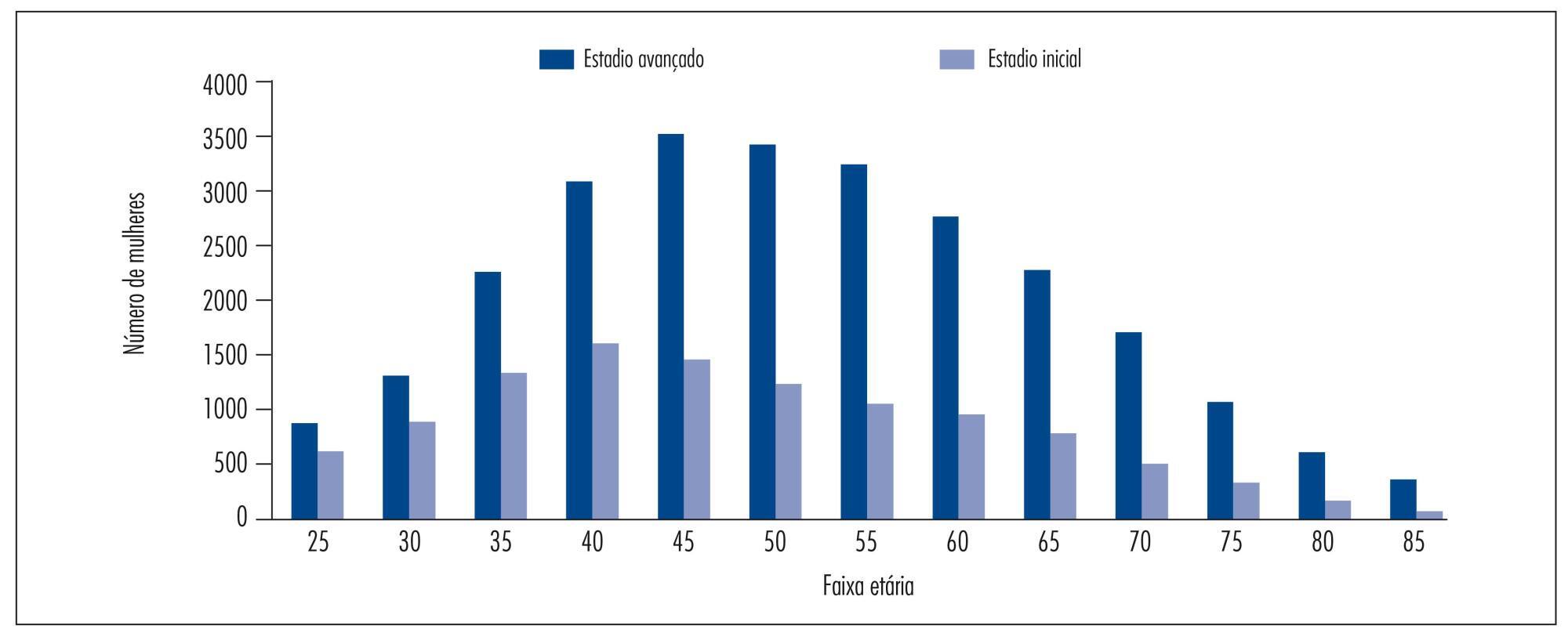
Summary
Revista Brasileira de Ginecologia e Obstetrícia. 1998;20(5):237-243
DOI 10.1590/S0100-72031998000500002
We analyze prospectively the existence of a relationship between the mother's glycemic control, in the first half of pregnancy, and the occurrence of abnormal fetal cardiac abnormalities, in pregnant women with diabetes mellitus. In 127 pregnant women, the level of glycosylated hemoglobin was determined on the first visit during prenatal care. Nine patients had type I diabetes, 77 type II and 41 gestational diabetes mellitus (GDM). All mothers were submitted to detailed fetal echocardiography, during the 28th ± 4.127 week of gestation. In 31 (24.4%) of the 127 fetuses cardiac anomalies were detected. In 10 (7.87%) an isolated cardiac anomaly was identified. Mean HbA1c in the group of pregnant women without cardiac anomalies (5.64%) was statistically different from the group with anomalies (10.14%) (p<0.0001). The receiver-operator characteristic, representing the balance between sensitivity (92.83%) and specificity (98.92%) in the diagnosis of structural cardiac abnormalities, showed a cut-off point at the 7.5% HbA1c level. In nine of ten fetuses with structural cardiac anomalies, the maternal level of HbA1c was higher than 7.5%. The difference between means of the groups with and without myocardial hypertrophy diagnosed as isolated anomaly (MCHP) was not statistically significant, when considering both type II diabetes and GDM subgroups. In conclusion, levels of HbA1c higher than 7.5% were associated with most cases of echocardiographycally diagnosed structural cardiac anomalies. On the other hand, this test was not useful to discriminate conceptus with MCHP.
